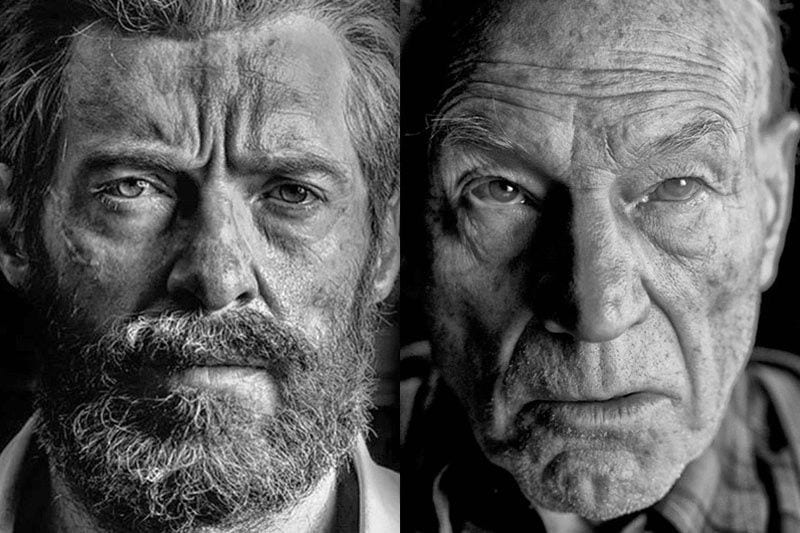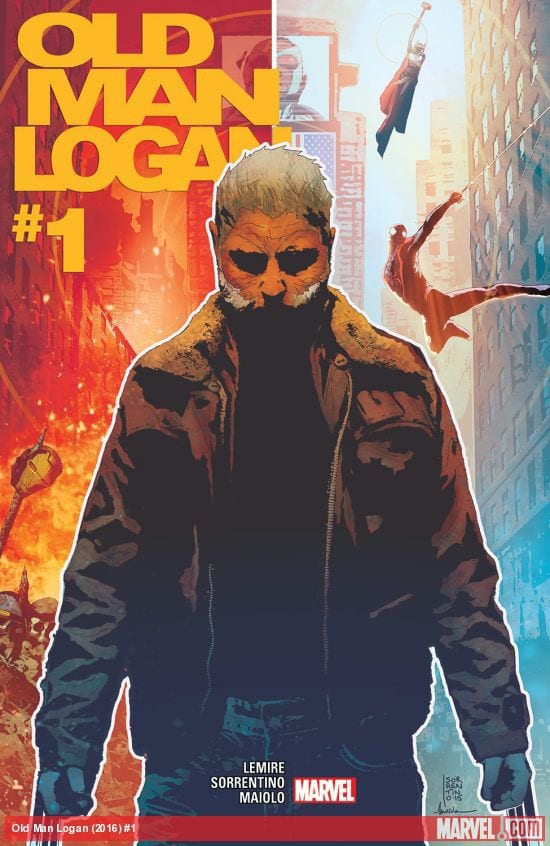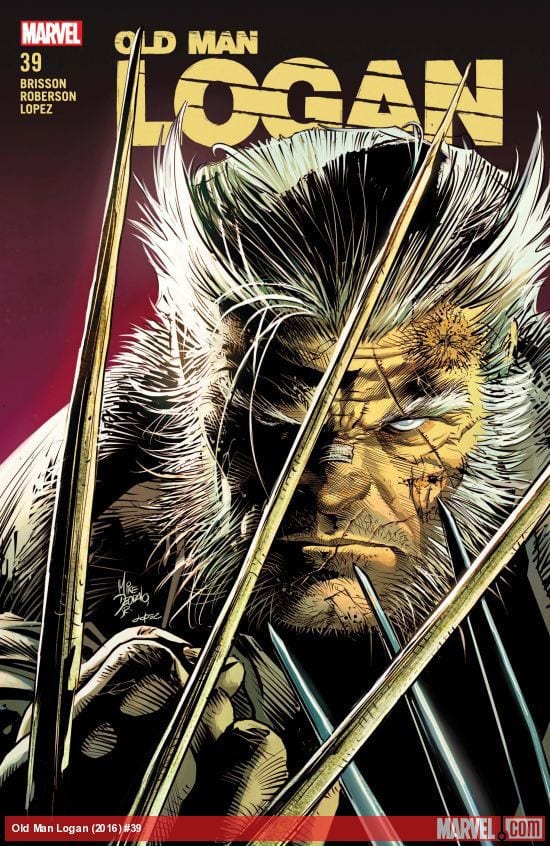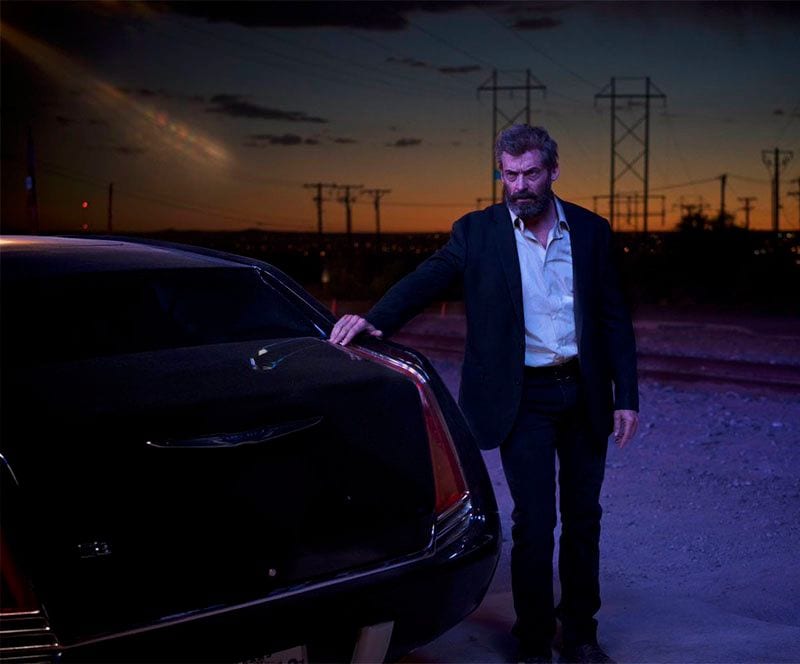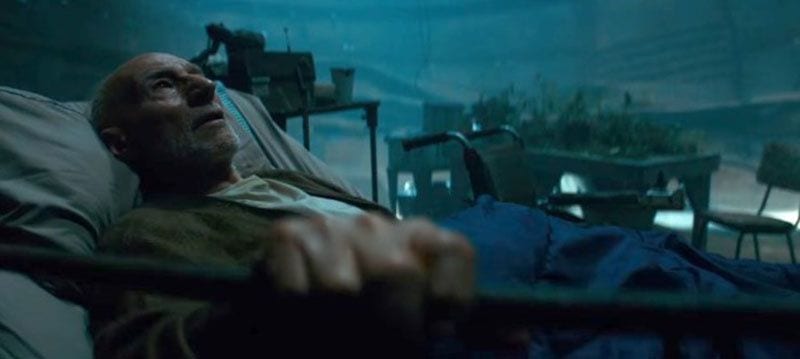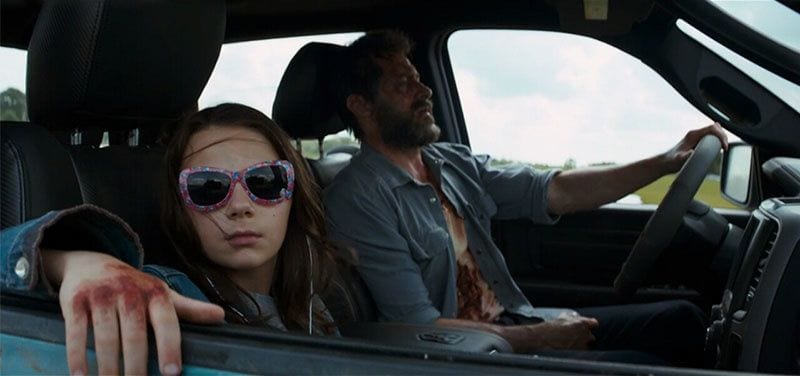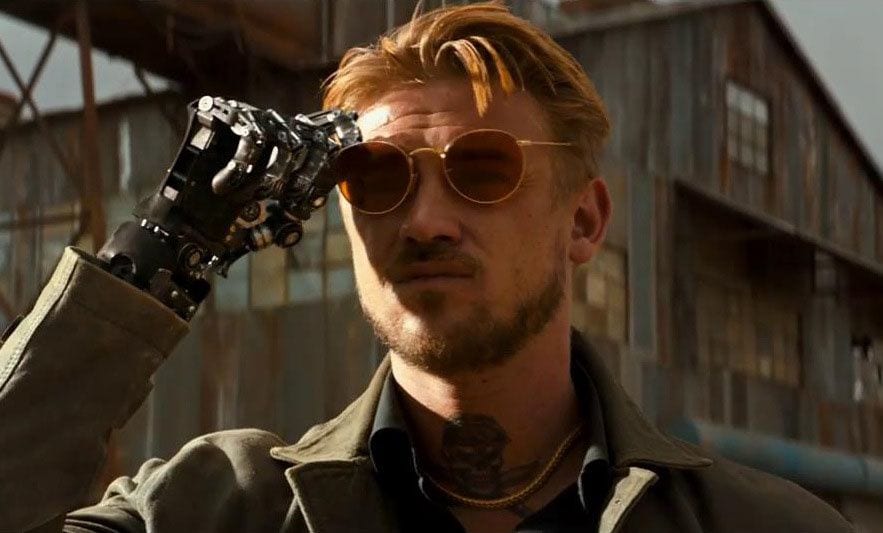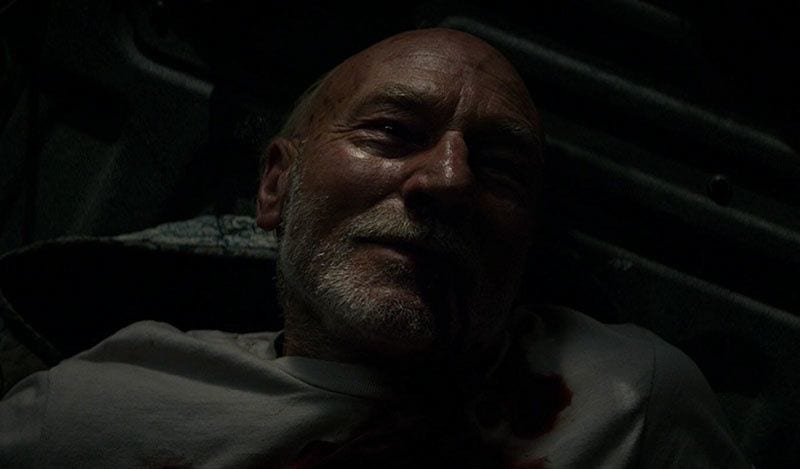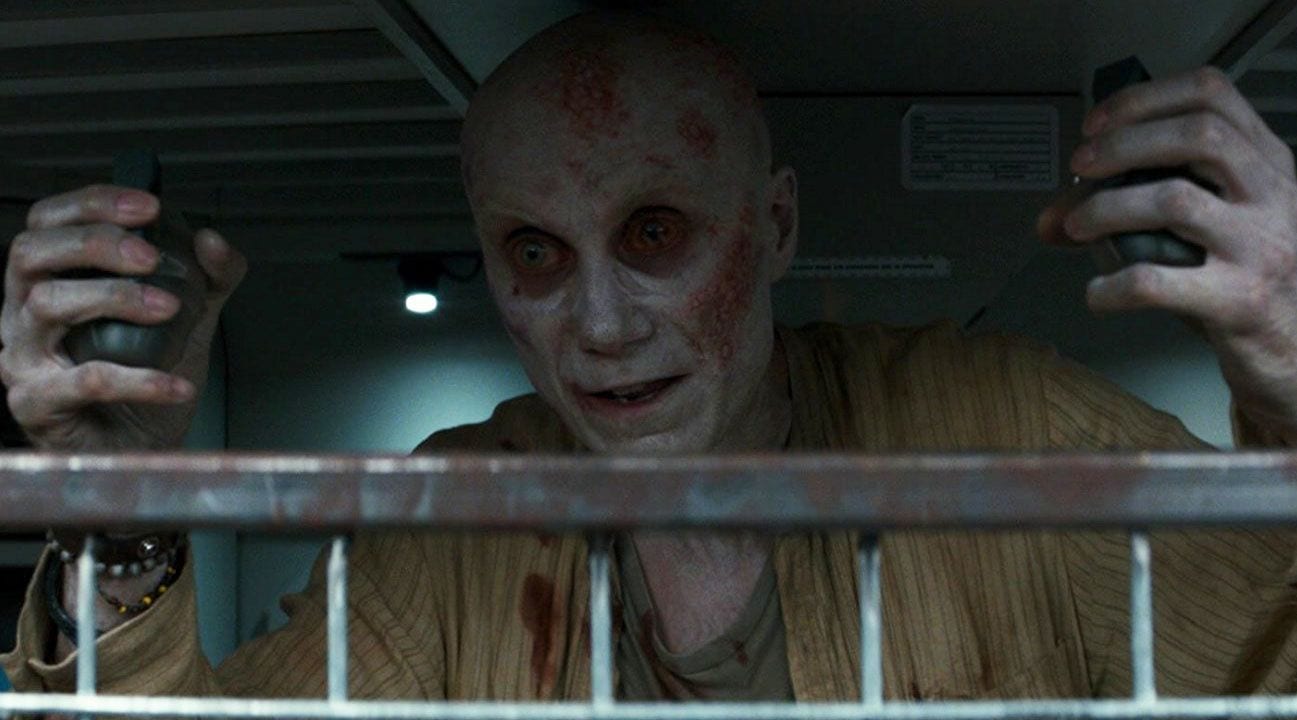‘Cinematic Universes’ have come to so dominate blockbuster cinema that to spend much time pointing it out seems banal in the utmost. To just look at the numbers, two of Disney’s current MCU frontrunners, Black Panther (2018, #1 box office) and Avengers: Infinity War (2018, #2), have generated more domestic revenue between the two of them than the next 15 titles combined as of May for 2018 according to Box Office Mojo (though one of those films, A Wrinkle in Time, also belongs to Disney). In 2017, cinematic universes of some shade or another composed six of the top ten domestic earning films that year, and five of those were of the spandex-donning ilk.
Unsurprisingly, the cinematic universe has come to be a model which other studios have attempted to replicate to limited success, with Warner Brother’s failed Dark Universe and Sony’s desperate attempt at a Ghostbusters ‘Ghost Corps’ cinematic universe composing the two most odious recent examples. While commentators in various corners have lamented the rise of the cinematic universe over the last ten or so years since the success of 2008’s Iron Man (though some mark the beginning with 2000’s X-Men), audiences have rather clearly not yet petered out on the mythic struggles of culturally iconic superheroes and villains, with each major MCU release in particular making waves both on the internet and at box offices.
It also doesn’t hurt that many of these films really just aren’t bad; if anything, they are exhaustingly competent. It’s a phrase I reserve most often for Disney’s modern efforts, films which aren’t often particularly extraordinary in any given aspect but which still manage to hit the box office sweep-spot of exceptional mediocrity with remarkable reliability and efficiency. These are films you might even love or which may mean something to you personally – my own weakness lies with James Gunn’s Guardians of the Galaxy films, with 2’s script (penned entirely by Gunn) acting as a relative exception to the design-by-committee rule.
In the particular case of this year’s Black Panther, an MCU film has managed to seemingly overcome long-standing barriers in big-budget filmmaking, featuring a blockbuster budget, a lead African-American filmmaker (Ryan Coogler), a nearly all-black cast, and a liberal use of African iconography (particularly in the form of Afrofuturism), all to rather resounding critical and box office success – though I would contend that the multinational corporation that is Disney finally decided to do what it and other major studios should have done decades ago not out of any sense of social charity or revolutionary consciousness, but because it realized that in the current political climate it would result in the acquisition of more social capital than it would risk losing.
On that note, again, all of this hasn’t been without its critics. Popular YouTube channel Red Letter Media frequently laments how its own review show, Half in the Bag, seems to have become something more like a ‘Comic Book Movie Review Show’ (in part because the demand to cover these films is always there), as do RLM often comments on the above-mentioned ‘design-by-committee’ feel frequently attributed to today’s large corporate studio productions. (And, yes, we shouldn’t ignore the impact YouTube content has had on the way a generation has consumed and critiqued media). Last year, Ben Child for The Guardian argued that cinematic universes were ‘on the way out’ due to the relative failures of every other studio’s attempt to create one outside of Disney’s efforts, making very brief reference to Logan as an example of a ‘standalone success’.
Most recently, Vox’s Todd VanDerWerff examined Marvel’s non-committal gesturing toward issues of sociopolitical relevance, arguing that while several recent superhero outings have touched on issues such as national sovereignty, race, and even economic inequality, “every single one of these movies loses its nerve when it comes to truly exploring [their] thematic questions.” Similarly, criticisms of Black Panther’s ostensibly revolutionary character, or at least, the multinational corporation and business practices which spawned it, have continued to slowly build since release; to be sure, these discussions are complex ones, and while it’s beyond the scope of this article to examine them, I assert that it’s fair to say that Black Panther will remain an important part of how this period in major cinema will be evaluated years on.
It’s behind all of this that it seems as if 2017’s Logan has somewhat sunk from substantive ongoing discussions on these subjects (though Oscar-buzz resurfaced Logan briefly when it became the first live-action ‘comic book film’ to be nominated for Best Screenplay). This is in spite of, I will argue, Logan‘s Oscar-worthy performances – I say without hesitation that it is some of Patrick Stewart and Hugh Jackman’s best work – and the script’s excellent thematic complexity, touching rather sincerely on issues ranging from military industrialism, old age, end-of-life care, the endless commodification of capitalism, immigration, emotional intimacy, and the essential nature of violence, all while still very much being a kind of ‘comic book movie’ with direct comic book influences.
Admittedly, as 2017’s remarkable closer to the trilogy of Wolverine-centered films (which began with 2009’s abysmal X-Men Origins: Wolverine), Logan was by no means a financial failure; it ranked #11 domestically for 2017, a truly remarkable feat for an R-rated film in an otherwise PG and PG-13 dominated box office environment (though these earnings were still roughly $100 million short of Thor: Ragnarok in the same period). Given the likelihood that the film’s R-rating was a studio risk to begin with, it wouldn’t follow to fire any slings or arrows at the film’s performance, particularly when you consider that its international box office take ($619 million) was several times its official budget, placing Logan in the #4 spot for the top-grossing R-rated films of all time.
All the same, I had greater hopes for the impact Logan would have on the discussion surrounding these broader trends in studio filmmaking. To be sure, that could change; as of the time I’m writing this, the film only came out just over a year ago, and as Deadpool 2 marks but the third major R-rated comic book film release, more may yet be on the way. The full impacts, if we assume there to be any significant ones, may yet manifest. Nobody really knows just how much longer these prevailing studio trends can sustain themselves.
However, now that the MCU has reached its long-standing milestone with Avengers: Infinity War via an unprecedented ten years of regular blockbuster-release buildup (with billions upon billions dollars spent and earned), and as cinematic universes and superhero films seem poised to continue just as they have been for years into the future, it seems useful to look back on why Logan is just so excellent, to examine how its source material informs, strengthens, and focuses what it set out to do, and refresh how it managed to expertly set itself apart from (and even in opposition to) the very studio trends its parent cinematic universe, the X-Men films, so helped to establish.
“The animals were so scared o’ me.”
When auteur filmmaker James Mangold – famous for 1999’s Girl, Interrupted, 2005’s Walk the Line, and 2007’s 3:10 to Yuma to Yuma (among others) – set out to adapt what would become Logan, one of comic book’s most revered runs served clearly as his prime inspiration: Mark Miller’s phenomenal Old Man Logan comic (which ran from 2008 to 2009, with an omnibus edition published in 2010). Really, it’s fair to say that ever since Old Man Logan‘s run, fans had been clamoring for some kind of adaptation, not just for its quality, but its influence; in a 2017 article by Abraham Riesman, which examined Old Man Logan in anticipation for Logan, Miller’s work is described as the “…most influential single X-Men story in a generation”, a rare event where an excellent writer full of new, challenging ideas (Miller) met up with a fantastic artist (Steve McNiven) and produced some of the most striking and memorable content in the medium’s history. Notes Riesman, Old Man Logan‘s success was so resounding as to become the ‘definitive version’ of the character post the death of the ‘usual version’ in 2014 (a series of events which, it should be noted, were rather clearly merged with elements of Old Man Logan to form Mangold’s final vision for Logan).
Reading Old Man Logan, it isn’t terribly difficult to see what the excitement was about. Miller’s ideas are often positively off-the-wall, brimming with a striking combination of childish enthusiasm, grim humor, and dead-serious thematic elements. It’s the Marvel Universe meets Mad Max meets 1992’s Unforgiven (an explicit influence on Miller’s part), and if you needed any further evidence as to why it’s so beloved, it’s exactly as fantastic as that sounds.
Old Man Logan begins with grim flashbacks to a past our present incarnation of Logan – an avowed pacifist living out a ‘normal life’ with a wife and two kids in an effectively post-apocalyptic wasteland – wishes desperately to atone for. The ‘Banners’, grotesque cannibalistic backwoods parodies of the Hulk which no doubt took some inspiration from The Hills Have Eyes (1977, 2006), arrive at Logan’s doorstep demanding rent; our new Logan confronts them only to imagine, privately, the bloodshed he once so wrought, backing down from old visions of violence to receive a beating no one without super toughness (or a healing-factor) could possibly endure. While in recovery, Hawkeye shows up to offer Logan and his family a way out, an ostensible drug run which could secure enough money to cover rent for months. Logan reluctantly agrees, but when he assures Hawkeye that his killing days are behind him, Hawkeye just can’t seem to take him seriously, a skepticism which is repeated every time Logan somewhat serenely resists a call to anger and bloodshed. Note that Hawkeye, now an old man, here suffers from glaucoma, a subversion of reader expectations and superhero iconography which Miller gifts to readers on nearly every page.
Much of the story then unfolds as a kind of road trip across the desolate-if-not-dystopian ruination of future America, the aftermath of a night set 50 years prior where the villains ‘finally organized their numbers’ and killed every superhero of note; at one point, Hawkeye bitterly and somewhat absurdly reflects on how they seemed to spare him, how it gnaws on him that the villains didn’t see him as ‘worth it’ even if it ultimately meant his survival. It’s this same ‘Night the Heroes Fell’ that Logan commits an unspeakable act which, following a failed suicide attempt, sees his guilt cornering him into the life a dyed-in-the-wool pacifist, a version of Eastwood’s Bill Munny who once favored six blades over six-shooters.
When the provocations of a drunkard finally drive Logan to a bar side brawl, Hawkeye at last learns ‘what they did to him’: on the night the villains organized to wipe out the world’s heroes, Mysterio (“Master of Illusions”) manipulated Wolverine into killing every single one of the X-Men, literally tearing them apart while convinced he was fighting off a supervillain attack on the school. It’s as his last victim asks him ‘why’ that the illusion is lifted, and Logan is left with his most unforgivable sin. “The animals were so scared o’ me,” he notes, while we watch him drag his broken spirit across a dark landscape toward his own suicide. Though letting a train run over his head wasn’t enough to kill the adamantine-coated super-healer, ‘Wolverine died that night’ and Logan emerged. Hawkeye offers no protest.
It’s a story which easily captivates for a character so traditionally steeped in animalistic rage. It posits that violence, an essential part of Wolverine’s frequently miserable life, became so inextricable from who he was that he couldn’t help but hurt the people around him, and that to put an end to it meant nothing less that keeping his claws sheathed for some 50 years. It’s natural that taking a character so singularly known for violence and flipping him on his head would be compelling, but it’s Miller’s execution and McNiven’s stunning art which carries Old Man Logan‘s provocative subversions to grand heights.
Juxtaposed to Logan’s pacifistic despair is Hawkeye’s endearing wish to be important again, to find a way to bring the fight back to the villains and return some hope to the world. While I wouldn’t characterize Hawkeye as naïve, it is ultimately his stubborn insistence on finding a chance at returning to former glories which results in his death: when Hawkeye and Logan finally arrive at their destination, it is revealed that they weren’t on a drug run, but a mission to deliver the same superhero formula which created Captain America to a group of ostensible freedom fighters. It’s when Hawkeye’s demand to become a part of the ‘new Avengers’ – to take a vial of the super-serum and become a better version of himself – is supposedly met with approval that we see him properly open up: “You have no idea how much this means to me. I feel like I felt when they first made me an Avenger. Just to have someone believe in me like this…”. Hawkeye desperately wishes for someone to have faith in him again, to connect with him and set upon him a sense of worth and usefulness, and for his candid trust he’s repaid with betrayal and violence; the deal, it turns out, was a sting operation by the Red Skull, the now ‘President’ of the United States (or at least, the Eastern seaboard).
Logan, riddled by submachine gun fire, is transported to Red Skull’s White House lair. He naturally comes to, and enraged at his friend’s death, breaks his pacifist vows when he literally uses Captain America’s shield (displayed in Red Skull’s trophy room) to brutally decapitate the fascist villain in a stunningly iconographic display of violence. However, it isn’t until he returns home and finds his family dead – slaughtered two-weeks prior to the deadline the Banners gave him for rent – that at last Wolverine is reborn and his claws unsheathed.
Not unlike Unforgiven, we therefore have a narrative structure where an initially reluctant ex-killer slowly reveals his past (Munny’s infamous drunken slaughtering of pretty much anything on two legs), has an initial return to violence (the raids against the rapists they were paid to kill), and finally, when stirred to vengeance at the death of his loved ones, returns full-force to his old life of unrepentant murder to kill the offending sheriff and his deputies. It’s a ‘natural’ progression which unfurls in the way of an old problem drinker returning to his habit (literally analogous to Munny’s violent outbursts in Unforgiven), a descent which feels believable. When Logan finally visits his vengeance upon the Banners, it’s swift and brutal, a phantasmagoria of viscera and flying limbs: “No more games. No more talking… I’m just here to kill you people.” It ends with Logan burying his family and riding into the sunset with the recently-orphaned ‘Hulk Jr.’ in tow, remarking that he has learned to ‘forgive himself’ as he sets out to confront every last villain left in the world. We might wonder whether the greater point is to simply drown in the catharsis of violence, ‘the Wolverine’s’ only real dependency.
It’s in Old Man Logan‘s conclusion that we find what is perhaps one of the core thematic deviations between itself and Mangold’s adaption, namely the subtleties of how each engages with the issue of violence (which will be examined later). Furthermore, Logan‘s original premise and myriad plot divergences from Old Man Logan are at least in-part the result of licensing discrepancies between Fox and Disney; Mangold couldn’t exactly depict Hugh Jackman bursting out of an elderly, cannibalistic CGI Hulk’s stomach, intestines and all, if Fox had no rights to those characters, nor could Hawkeye accompany him on his journey across a dystopian American landscape (setting aside myriad frustrations with the absurdities of modern legal struggles regarding intellectual property rights). Still, it’s useful to look back at Old Man Logan not least of which because it so clearly made an impression on Mangold, but because many of its themes carry over to the adaptation all the same, including the interpersonal alienation which results from a dystopian world whose values are so thoroughly inverted.
“Just shows how bad things are.”
Mangold’s Logan introduces us to an ailing, alcoholic Logan (Jackman) in the year 2029. While reticent to violence in an early confrontation with thugs who are trying to strip parts off of his limo (his only source of income), Logan is by no means a pacifist – an early signal that the film’s overall approach to violence is ready to distinguish itself from Old Man Logan and Unforgiven. In the way of many a miserable old man, his demeanor presents as that of a barely composed drunk with unresolved anger issues, though always with a sense of buried pathos – a burn-out whose failure to establish any lasting, meaningful, rewarding relationships has killed his enthusiasm for living. He also, unlike early Old Man Logan, hasn’t made any great progress on his anger issues. Yet, while he is largely no more ‘Zen’ than he ever typically has been, he all the same now carries a greater lucidity about violence, a greater awareness of how it has helped to ruin his life. As we later learn, he is also suicidally depressed – a side-effect, we might surmise, of his inability to escape this violence: “Nature made me a freak. Man made me a weapon. And God made it last too long.”
Injured by his confrontation, we later witness his slow recovery in a bathroom mirror; something is wrong with his healing-factor and, at the very least, Logan looks like he is on his deathbed anyway, a dirtied, weathered face which sometimes features canyons for wrinkles. Logan is ‘charged’ with the care of an even worse-off Professor X (Stewart as Charles Xavier), a nonagenarian whose glory days are so far behind him as to have formed a kind of myth.
Charles, suffering from a degenerative brain disorder, tragically hurts everyone around him anytime he experiences a seizure, freezing people in place and causing trauma tremendous enough to kill weaker individuals exposed to his power for more than a few minutes. Describes Caliban (Stephen Merchant) – an albino mutant who reacts violently to sunlight and is capable of tracking other mutants over long distances – the effects of Charles’ seizures are horrific; when Logan chides him (“It was barely a minute!”), Caliban counters: “…I almost died this morning… It felt a lot longer than a minute. I couldn’t breathe. You’re less affected.“ It was after one such seizure a year prior that Charles inadvertently killed seven mutants – the last of the X-Men, to his utter grief. He now resides in the hallow remnants of a smelting plant, cared for only by Logan and, to a lesser extent, Caliban. The sudden introduction of the young Laura (Dafne Keen) and her abhorrent military-industrial pursuers (led by Boyd Holbrook’s vicious ‘Pierce’) drives both Logan and Charles out of hiding into a fateful road trip to find safety for the girl.
Prior to digging into the interpersonal relationships (and violence) which make up the heart of Logan, however, it follows to examine the near-future world all of this takes place in. Unlike Old Man Logan, this is not a tripped-out Neo-Western wasteland brimming with Moloids (essentially murderous mole people), dinosaurs, raiders riding dinosaurs, or Moloids eating raiders riding dinosaurs. Logan is a Neo-Western wasteland of sorts, but one that is far more familiar to us; if anything, various scenes in Logan look like ordinary everyday places full of ordinary everyday people, if not scenes from our own brand of dystopia today. In other words, while set in the X-Men universe, it is our world. It is in these mundane elements, however, that Logan holds up a striking social and environmental mirror to our own society and the relentless commodification of capitalism.
Logan‘s world essentially presents as a form of modern American life where the presently dominant socioeconomic forces, corporations, bureaucratic/fascistic oppression, and military-industrial might have only furthered their stranglehold. This is conveyed both through detailed world building and in the film’s villains. In terms of the latter, we have the charming cyborg Pierce, the military-industrial bioresearch corporation Alkali-Transigen (presumably an arm of ‘Essex Corp’), and Dr. Zander Rice (Richard E. Grant), son of Dale Rice, founder of Essex Corp and one of William Striker’s subordinates in charge of the same Weapon X program which gave Logan his adamantine skeleton – turning him into what would come to be known as ‘The Wolverine’ (this transformation was one of the main subjects of 2003’s X2).
Logan first learns of the 11-year-old Laura when a woman named Gabriela (Elizabeth Rodriguez) pleads Logan to escort Laura into a North Dakotan refuge called ‘Eden’. Initially refusing, he later reluctantly accepts only to find Gabriela dead. Upon return to their hideout, Logan is immediately confronted by Pierce and Transigen’s ‘Reavers’ (based loosely on the team of cyborg criminals from the comics); after they leave, it is revealed that Laura stowed away in Logan’s limo and has made fast friends with Charles. Following a later Transigen raid where we learn Laura somehow has powers (and weapons) similar to Logan, Logan, Xavier, and Laura manage to escape. However (and critically), Caliban is captured and then tortured to help Transigen track them through much of the film. Soon thereafter, a video found on Gabriela’s phone exposes Transigen’s agenda: to experiment on children for military and financial gain. Their successes are by then the culmination of decades of similar research first begun by the genocidal Striker (whom Logan brought down in X2). It’s when Gabriela, a then nurse with the company, finally couldn’t stand the abuse that she helped Laura to escape (a moral sacrifice which costs her life).
Throughout the film, Transigen and the Reavers seemingly operate with total legal impunity. It isn’t exactly some covert operation which operates in the shadows; they raid in broad daylight with apparent independence from local authorities (including a casino/hotel in Oklahoma City). If Transigen isn’t operating with either the explicit aid or permission of the US government, they are certainly powerful enough to not worry about any consequences authorities could bestow upon them (even when their actions result in the wanton death of civilians, something which will be detailed later). This, of course, is only different from the power corporations wield today by degrees; to cite but one among an endless myriad of accounts and examples, according to qualitative research conducted by Edmund F. Byrne in 2010, “…the U.S. military-industrial complex (MIC) is circumstantially unethical”, participating in the supply of equipment and services to facilitate unjust wars which don’t meet the basest requirements for self-defense (Journal of Business Ethics, 95:153). It follows that a corporation willing to bioengineer child soldiers would be capable of any atrocity, any devaluation of human (or mutant) life.
However, many films feature corporate villains who exercise any means necessary to achieve their crass goals of profit and power. Set alone, Transigen is certainly just another in a long line of such villains. Yet, what distinguishes Logan‘s antagonists is excellent world building, a set of background details and minor interpersonal interactions which form a broader picture of an abysmal world whose unerring alienation is more than a little familiar. Early scenes feature Logan driving rowdy drunkards shouting “U.S.A! U.S.A!” at a line of detained migrants. When Logan later attempts to cross the US-Mexico border, a quick establishing shot depicts another line of detained migrants surrounded by border patrol forces, a dusty, miserable concrete landscape in the background of which looms an industrial park billowing thick plumes of black smoke into a dim, overcast sky.
It additionally seems fitting that one of the film’s most populated scenes takes place at a casino, one of capitalism’s most grotesque profit centers, with gambling addictions carrying a suicide rate at least twice that of any other addiction. Shortly after Logan and company’s escape from Transigen’s raid there, an automated delivery semi-truck (dubs Logan, “Motherfucking auto-trucks!”) nearly kills all of them when it forces itself into their lane, causing both themselves and a farming family to careen off-road as the trucks continue to speed about. Again, this is the kind of world-building detail which is more telling than it might initially appear: one might imagine a world where corporations have so much sway over public safety regulations that they can dominate the roads with ruthless, cold, self-driving efficiency, sacrificing basic safety concerns for slightly trimmer delivery times to bolster the bottom line.
If somehow, however, you still weren’t convinced of Logan‘s more-than-passing issue with corporate power, the plight of the farmer’s family couldn’t make it much clearer. Firstly, the reason why there are essentially no mutants left in Logan’s world lies explicitly with a strain of genetically modified crop introduced to suppress the mutant gene; by the time the film begins, no new mutants have been born in 25 years. This suspicion of corporate agriculture carries into the farmer’s woes. When the farming family struggles to corral their horses after being run off the road, Stewart implores Logan to help: “We should help them.” Logan replies, “No, we have to keep going someone will come along“, to which Charles counters, “Someone has come along.” After taking the time to help, Charles later insists that they take up the family’s offer of a warm meal, and following their meal, Logan accompanies the father (Eriq La Salle’s Will Munson) to a quick water-pump repair job where he imparts his family’s story:
Canewood Beverage bought everything out here except for us. When we wouldn’t sell, they tried eminent domain, then screwing with our water. Couple of months ago someone poisoned our dogs… Look at [the distant automated mega harvesters] … [they] look like dinosaurs with their 20-ton bodies and tiny little brains, shoveling their cloned-up super corn… you know it tastes like shit too… [People don’t even eat it], they drink it. Corn syrup. It’s in those drinks that’s everyone’s having, you know, to stay awake, cheer up, feel strong, sexy, whatever. Used to be a time when a bad day was just a bad day.
After Munson’s sabotaged pump is fixed, he and Logan are confronted by some of Canewood’s local corporate goons. Logan helps Munson to fend them off, but it’s his last victory against their fascism; that night, Transigen’s attack on Munson’s farm results in the needless death of his entire family. It’s an act of senseless, reckless, yet utterly unaccountable corporate murder, and it was the end of the Munson family’s brief resistance to forces which ultimately mowed over them as they’ve mowed over so many of us. It’s a tremendously difficult scene to watch, a scene whose villains record and detail their ‘new weapon’s’ ruthlessly efficient performance with the coldest calculation (more on that weapon later).
Lastly, Logan’s exhausting, mindless work as a limo driver early in the film seems to primarily fund two things: his alcoholism (again: addiction), and medicine for Charles. His menial wage-labor is easily analogous to the early financial destitution of both Old Man Logan and Unforgiven’s protagonists, stories which open with struggling families whose main bread-winners are driven to great lengths to help ends meet, particularly when you consider that Logan’s initial drive to accept Gabriella’s request is financial – a chance for Charles and Logan to escape their present circumstances. Though the reasons for Charles’ private, financially unaided medical treatment may be particular to the film, it’s the familiar, mundane aspects of Logan’s near-future world which allows the audience to rather easily imagine themselves in a similar situation, working a dead-end job to pay for medical bills Medicare doesn’t cover (if indeed one is insured at all), barely making ends meet to care for your own elders while they bear the guilt of draining their own family’s resources in the twilight of their lives.
It also doesn’t hurt the film’s efforts to communicate the desperate alienation of these circumstances that Patrick Stewart’s final turn as Charles Xavier is one of the best performances of his life. Even if you’ve never taken care of a dying and/or elderly loved one (particularly with dementia), his performance is so true to the challenging experiences of elderly care, so tragic and grim (and yet somehow also occasionally funny and enlivening), that the emotional journal of care, pain, and loss is transmitted to the viewer with stunning depth. Though awards aren’t necessary to legitimize excellent work, Stewart could have easily earned an Oscar nomination for his work in Logan, and the subtleties of his relationship with both Logan and Laura could more than fulfill an articles-worth of analysis and heartfelt reflection.
In sum, Logan‘s world is simply a version of our own on its current course. It’s full of miserable, desperate, addicted, confused people trying to find meaning in a society which institutionally robs them of chances for real intimacy with one another, a society which burns at their bodies, their minds, and their souls. It’s when people become so thoroughly alienated from themselves and others that violence, of some form or another, more easily enters their lives, and it’s the finality of death and violence – the ways in which violence both shapes the lives of Logan’s principal characters and ultimately reflects their values – that helps the film to so grandly stand apart from the dull, inane, deafening, and yet somehow sanitized and routine violence of its ostensible cinematic peers.
“In the real world, people die. No self-promoting asshole in a fucking leotard can stop this.”
Each of Logan‘s principal characters has a distinct relationship to violence. For our antagonists, Pierce, Dr. Rice, and Transigen/Essex Corp., violence is a means to an end which doesn’t even remotely justify the bloodshed, a means to an inhuman lust for greater power, wealth, and control. Theirs is perhaps the most common and ubiquitous violence, a structural violence visited upon the poor and oppressed by an elite so removed from their struggles as to act with utter psychopathic abandon.
For Caliban, violence becomes both a last resort and a final act of defiance. When, via manipulation and false promises, he agrees to lead Transigen to the farmstead Logan and company are hiding out at, the horrific slaughter which ensues leaves him with a choice: either continue to be tortured and hurt his own loved ones or end the suffering on his own terms. It’s when he decides to pull a pin on a stray grenade, sacrificing his life, blowing up his mobile cell, and disrupting Transigen’s attack, that he at last exercises his agency and makes a real choice.
For Charles, violence is involuntary; it’s the pain he inflicts on the people he loves each and every time he suffers a seizure. The very elderly, through myriad forms of growing infirmity, often become emotional and financial burdens to their loved ones, and in Charles’ case, his condition often seems utterly isolating – a horrible curse which hurts his own friends and family without the courtesy of even allowing him to remember he did it. Like Logan, who he has become, who he is, alienates him from the interpersonal intimacy so desperately requisite to a happy, healthy life. Additionally, baked into the film’s premise is the death of the X-Men and most of mutant-kind, ‘Professor Xavier’s’ very life work and, up until the events of Logan, reason-for-being (and much as the X-Men represented Charles’ aspirations for a tolerant, cooperative future with humans, their demise signals the death of that very hope). It’s through his journey with Laura, and the familial interplay this creates between Logan, her, and himself, that he is for one last time granted a role to play – that of a father to Logan and a grandfather to Laura. It’s this sense of belonging, of being needed, which helps to ultimately soothe his own tremendous guilt (not entirely dissimilar to Hawkeye’s quest for relevance in Old Man Logan).
For Laura, violence is what she has been made to know. Like Logan, Laura has both the means and the ferocity to excel in battle, to function as a superb weapon even against overwhelming odds. It’s through the sacrifice and guidance of the parental figures which seek her liberation from Transigen – whether Gabriella, Logan, or Charles – that she finds guidance, lessons which we will arrive at shortly.
For Logan, violence is the rot at the core of his life. Like Laura, he was both born for violence (his healing-factor) and engineered for violence (his adamantine skeleton). Like Charles, this violence has ultimately stripped him of every person he has ever cared about, a pattern some seventeen years of films has helped to establish; to give two examples, in 2000’s X-Men, Logan nearly murders his then only friend, Rogue, by stabbing her through the chest following a nightmarish fit. In 2006’s frequently maligned X-Men: The Last Stand, he’s forced to kill Jean Grey, the woman he loves, to stop her destructive rampage (an event which haunts him in 2013’s The Wolverine, also directed by Mangold). Even setting these events aside, it’s a natural progression for a character like Logan to eventually become so thoroughly worn by a life of violence which has spanned over a century, a series of visceral conflicts where one after the other he has literally impaled and torn his enemies to death with his own hands.
If Logan‘s film history wasn’t enough, however, the film finds a way to represent his past quite literally in the form of X-24, a Transigen-engineered recreation of ‘The Wolverine’s’ early promises for genocidal maniacs like Striker and Dr. Rice. X-24 looks precisely like a younger Logan but sports a fully-functioning healing-factor and is leaner (sporting a kind of buzz-cut reminiscent of hairstyles from previous films), far more obedient, and – given that his orders come from Dr. Rice – in every way crueler. While the trope of the ‘evil-twin’ may seem silly for such an otherwise dead-serious film, it’s this thematic purpose for X-24 which makes him work, a Jungian shadow-self full of the impulses of the ‘Id’, brimming with rage and indiscriminate violence (while arguably being one of the film’s ways of representing its opposition to the banal, senseless violence of both the films which preceded it and comic book films in general).
When we are first introduced to X-24, we find Charles laying in bed, weeping, uttering what would become Charles’ final words: a recognition of the pain he has inadvertently caused others (“I’ve remembered today what happened [a year ago] …“) and the struggles Logan has been through. He offers up this intimacy only to be stabbed brutally in the chest by what, to him, may very well have simply looked like the Logan he loved. Logan may not have killed Charles, but in the worst possible way, his weaponized genetic legacy did.
It’s following Logan’s first confrontation with X-24 (which nearly kills him) and the a-b-s-o-l-u-t-e-l-y heart-wrenching burial of Charles Xavier that he finally collapses. Laura helps him to a doctor, and following treatment convinces him to help her the rest of the way to Eden. Upon arrival, they find other escape Transigen children preparing to escape into Canada. It’s here that Laura discovered Logan’s adamantium bullet, a last-ditch trump card for Logan to bring an end to his suffering the only way he knows how. It’s the late exchange between Logan and Laura about this bullet and what they’ve been through which composes perhaps the most important moment in the film’s ethos:
Logan: Do you have nightmares?
Laura: Si…people hurt me.
Logan: Mine are different.
Laura: Por que?
Logan: …I hurt people.
…
Laura: I’ve hurt people too.
Logan: You’re going to have to learn how to live with that.
Laura: They were bad people.
Logan: …all the same.
Frankly, never mind just superhero movies and tentpole blockbusters: these lucid, incisive, non-apologetic examinations of violence are rare for most popular American cinema. Particularly in the post-9/11 world, in a world of ‘Wars on Terror’, unending nationalistic ‘righteous’ indignation, and the thinly-veiled imperialism of ‘humanitarian intervention’, American films and popular media have all too rarely offered a sincerely critical eye to the violence which suffuses our lives both domestic and international. It is the fact that, yes, Logan is a damn superhero movie that makes the depth and maturity of the writing all the more impactful, however, because the opportunities for this message to be seen, heard, and felt are increased exponentially by exposure in such a popular medium/property (the very same reason why I examine the politics and ethics of popular media in the first place). It’s all the better that Logan, a character who can be seen as representing much of the hyper-machismo which defined the uber-violent action-outings of ’80s and ’90s cinema, is so grown here, a genuine reflection on himself and ourselves.
Logan is here accepting that violence, no matter how righteous it might seem, is indeed violence, and violence leaves a mark on people; violence destroys lives. It isn’t a game, and often for those who have actually participated in it, it isn’t even entertainment. There’s a horrendous, sudden finality to it. People die, and yet the survivors (and even perpetrators) carry the deepest scars. It’s this attitude which arguably removes Logan from its prime inspiration, Old Man Logan: where Old Man Logan‘s final bursts of violence are meant to be wholly cathartic (and even celebratory), a righteous release which the page’s version of Logan sees as a manner of ‘finally forgiving himself’, Mangold’s Logan never loses the sense of tragedy behind all of the bloodshed, even in the final-most moments of victory.
Indeed, when the film at last moves into its conclusion, Logan finds a final chance to at least somewhat redeem himself (after initially refusing to continue escorting them) when he comes to the aid of the escaping children as they are imperiled by a final Transigen assault. The showdown, a final burst of regenerative rage with the help of a super-serum Logan was given earlier, sees the death of the remaining Transigen ‘Reavers’ and Dr. Rice. While tied up with an enraged X-24, the children finish off the remaining forces as well as their chief tormentor, Pierce. As the serum wears off, Logan’s fight with X-24 turns brutally against him; after being stabbed and cut half to ribbons, X-24 heaves him onto a fallen, broken tree branch, an ultimately fatal wound. In a moment of foreseeable yet no-less-salient symbolic action, Laura uses Logan’s adamantine bullet to shoot and kill X-24.
Laura comes to Logan’s side. “Don’t be what they made you, Laura… Laura… so, this is what it feels like.” Logan finally dies. “Daddy,” Laura weeps.
“There’s no living with a killing.”
Around Logan’s midpoint, Charles and Laura are watching a pivotal scene from 1953’s Shane (a major influence for Mangold):
Man has to be what he is… Can’t break the mold. I tried it and it didn’t work for me… There’s no living with… with a killing. There’s no going back from one. Right or wrong, it’s a brand. A brand sticks. There’s no going back. Now you run on home to your mother and tell her… tell her everything’s alright… There aren’t any more guns in the valley.
Logan and the children’s victory over Transigen is temporary; Logan warns Laura as much as he lay dying. Logan’s personal atonement isn’t society’s; this is still a vicious, exploitative world full of seemingly unending corporate power, prejudice, and greed. Yet, for now, “there aren’t any more guns in the valley“, no more fights to be fought, nothing left but the ‘brand’ of violence and, at least, a final rest. Logan finds his agency at the very end, an act which doesn’t save the world but which doesn’t have to, a limited victory which mirrors the limited victories individuals and smaller communities must seek if they wish to enact any change at all amidst global forces which are so often out of control.
Again, it’s due to the seriousness with which Logan treats violence that it is so able to distinguish itself from its every other peer. Violence has life-long effects. A life of violence carries life-long misery. Killing is final. Characters essential to the X-Men mythos die here, and not in pretty ways. Things end, and it is this humanity, this limitation, which so invigorates Logan‘s deep sense of pathos. Jackman and Stewart bring their characters to life with tremendous performances, and it’s the script’s sincerity and commitment to consequence which allows those performances to work (and indeed exist to begin with). It’s a kind of thematic seriousness which cinematic universes don’t allow for in the name of endless plot-hooks and ongoing profits, yet all too often are these films regarded exceptionally when they (e.g.,) ask us to pretend to feel tension during a fight we know there is no possible way for our heroes to lose, or worse, ask that we feel moved when a character dies whom we know is confirmed for another film next year.

It goes without saying that we don’t live in a world of superheroes, of consequence-free deaths and resurrections. We live in a world of deeply flawed people facing tremendous obstacles trying desperately to make sense out of an often senselessly violent, short life. Logan‘s depiction of those struggles moved me to overwhelming emotion more often in its single runtime than every film from every cinematic universe combined, and that connection, that momentary lapse in the ubiquitous alienation of modern life, is ultimately why I bother watching film.
Popular entertainment doesn’t need to be a dour examination of societal ills, an examination of the essentially ugly nature of violence. Many, if not most, of the people who pay to see these films year after year are just looking for a ‘good time’ (or something that won’t irrevocably scar their children). Yet, when we are so utterly inundated with this content, so seemingly surrounded by its tremendous success and the equally tremendous promotions its parent companies pump into our every possible sensory moment, I fear we forget just what it is that we are fucking doing: dully, repetitively engaging in a societal cult of emotionally removed, senseless, sanitized violence which wouldn’t dare ask us to spend more than a few moments superficially entertaining the subversive, challenging ideas these films so lazily and insincerely pretend to ponder. We live in a violent society, one that has been at war in the Middle East for 17 unbearable years and counting (to precisely no improvement and hundreds of thousands of civilian deaths); to pretend that our entertainment doesn’t both sustain and inform that culture in some manner, particularly when it doesn’t challenge us to rethink our commonly held assumptions, is naïve.
Again, entertainment can be simple, and violence can serve as a kind of entertainment in the right context. However, a culture of habitual detachment from any serious thought on what violence is, where it lies, and what our assumptions are is problematic, to say the least. Though all of this isn’t to say that there is nothing of merit in any of (e.g.,) the MCU’s reliably ‘entertaining’ films, it is to say (as Charles would) that, at the very least, ‘we can do better’. We can do better with the modern epic storytelling that helps to form how we view ourselves and what is possible, something superheroes and pop culture icons from properties such as Star Wars have come to be. Our art can do better. Our myths can do better. We can remember when looking back at this period of film history (whether sooner or later) that Logan did better.

